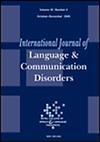A Preliminary Survey of Speech–Language Pathologists’ Perceived Effectiveness and Challenges of Tele-Practice in India
Abstract
Introduction
Tele-practice in speech–language pathology has existed for nearly a decade, but it emerged as a solution to overcome the challenges of access issues in delivering speech–language pathology services globally, particularly during the COVID-19 pandemic. However, it is essential to follow up on tele-practice services following a pandemic concerning their efficacy and factors influencing their implementation as a routine or long-term service delivery method. This study investigated speech–language pathologists’ perceived effectiveness and challenges of tele-practice in India.
Methods
An online survey of speech–language pathologists in India was conducted. Data from 110 speech–language pathologists were collected via Google Forms and further analysed using descriptive statistics and frequency distribution.
Results
Results are discussed under four domains: awareness and familiarity with tele-practice, comparison between tele-practice and face-to-face sessions, challenges faced, and patient satisfaction. Although speech–language pathologists in India had good awareness, familiarity, and high patient satisfaction via tele-practice, they preferred face-to-face sessions over tele-practice.
Conclusion
The grounds for speech–language pathologists’ perspective on tele-practice services in India are identified, and the need for reformatory measures for implementing tele-practice in India is highlighted.
WHAT THIS PAPER ADDS?
- Tele-practice, including teletherapy and telemedicine, has been studied extensively in Western countries like the United States and several European nations. These studies generally indicate that tele-practice can be effective for delivering speech and language therapy, particularly for certain populations and conditions.
- Studies in other countries suggest that both therapists and clients generally find tele-practice acceptable and feasible. Therapists appreciate the flexibility and reach it offers, while clients often report high levels of satisfaction due to reduced travel time and greater convenience.
- This paper specifically addresses the application of tele-practice for speech and language therapy within the Indian context. This is important because the cultural, linguistic and socioeconomic factors in India may influence the implementation and effectiveness of tele-practice compared to other regions.
- It explores how tele-practice can improve the accessibility of speech and language therapy services in India, especially in rural or underserved areas where traditional therapy services may be scarce.
- It provides empirical evidence of the effectiveness of tele-practice for speech and language therapy in India. This could include outcomes related to improvements in communication skills or overall quality of life for patients.
- Tele-practice can significantly improve access to speech and language therapy services, especially in geographically remote and underserved areas in India.
- Conducting studies within India would highlight the importance of adapting tele-practice methods to suit diverse linguistic and cultural contexts. This includes developing therapy materials in local languages and understanding the cultural beliefs that may impact communication and therapy outcomes.

 求助内容:
求助内容: 应助结果提醒方式:
应助结果提醒方式:


